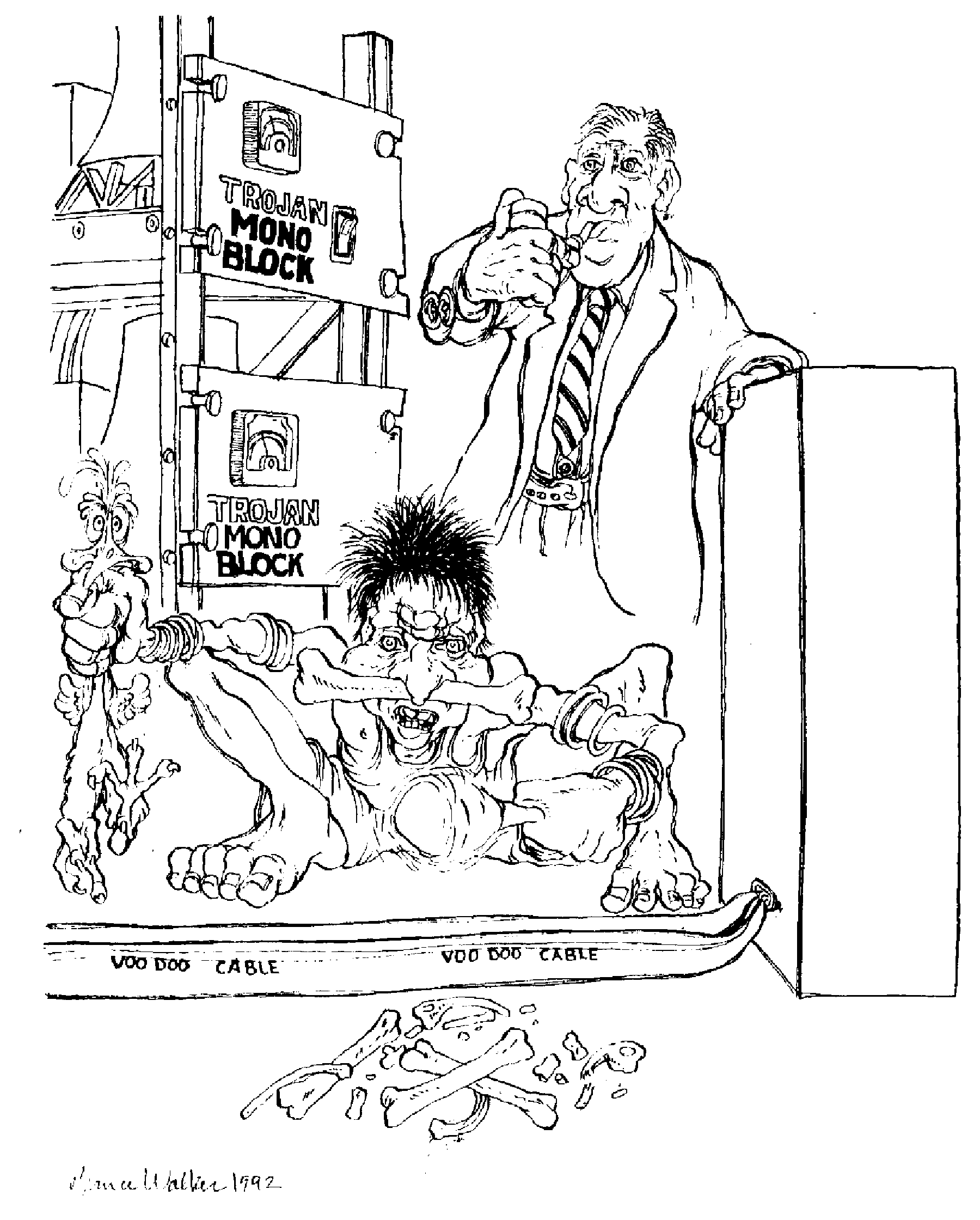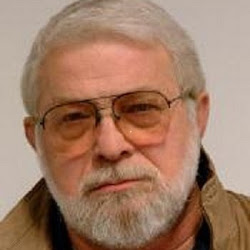Roger Skoff writes about an all-too-common Audiophile problem
From its very beginning, our hobby has been one of tinkering and do-it-yourself-ism. Much of that was for very good reason: in the mid-19th century, when the first telephone was attempted; in 1877, when Edison built the first phonograph; and even in 1920, when KDKA, the first commercial radio station came on the air—all of which were events leading to our present HiFi hobby—people simply didn't have a broad base of prior information to go on, and "dick and diddle" was very much a part of the inventor's toolkit. Even Edison and Bell fell into that category, and the improvement they made to each other's inventions directly parallels the modern audiophile's experimentation to get better sound.
And that tradition has continued, even to today. And it has worked. Or at least worked well enough in enough cases that people felt good enough about what they had done to keep on doing it.
Firm knowledge or not, in certain areas, experimenters can still "dick and diddle" and get results that—at least or if only, to them—are satisfactory. Any yahoo can, for example, take any loudspeaker driver, of any kind, or any combination of drivers, hook them up to any crossover network or no crossover at all, put them into a box (enclosure) of any kind or no box at all, wire them all together, and attach them to an amplifier and a signal source, and they will make sound. And the person who did it can call himself a "speaker designer." And, if he was lucky, the speaker might even sound good enough or have enough good things about it for him to make more.
Same thing with cables. Anybody at all can take any two conductors (a hair-fine "hookup" wire, for example, and one of the spans of the Golden Gate bridge) and wire them together so that they complete a circuit with no "shorts" and no "opens," and the result will pass signal. And the maker of it can call himself a "cable designer" and with practically no knowledge at all come up with something that actually works and that he can sell.
Of course, that doesn't apply to everything. You can't just start hanging together resistors and capacitors and tubes and transistors, diodes, and whatever else, and have it turn out to be a functioning amplifier, preamp, or CD player. For things like that, you really need a pretty good idea of what you're doing, or it won't work at
But what about stuff like magic discs or magic stickies? Or resonating tiny brass bowls? Or marking pens to make recordings sound better? There was once a thing called "The Twenty-five Cent Solution" that called for arranging two dimes and a nickel "just so" on the top of a piece of electronic gear. It was claimed to make the sound better. And many people thought it worked. And many other people thought it was—to use the HiFi doubters' favorite term—"snake oil and voodoo." They said they heard no difference at all. But, for any of these things, some did hear a difference, liked it, and insisted that it was real. And, for all we know, it might be.
There's more than one HiFi "tweak" that, despite having no logical explanation—yet—really does seem to work. And there are still others that, while they seem perfectly reasonable, have been proven over time to actually sound better twice: When you first put them in and then, later, when you take them back out of your system.
And that's the wonder and the glory of our hobby: The results are all opinion! No one, not even the performers or the recording engineer or the audience at the stadium or in the concert hall—knows exactly how the music really sounds to anyone other than himself. And even the recording engineer doesn't know what it sounds like to anything but the microphones he's hearing through his headphones or monitors. And there may be lots of microphones in lots of positions around the studio or venue, and they're all 'hearing" the music from different places, and possibly in different phase with each other!
That's not even counting "lay-up" or multi-track recordings, where there may never have been any "original" recording session at all, nobody knows what the music really sounded like!
That means that all of our hobby—where we spend so much time and effort and money to get our system to sound like "The Real Thing"—has no actual standard of what "the real thing" sounds like, and we're all just picking what we like and declaring it to be the truth.
And that lack of any true standard of reality opens us up to not only the wonderful sonic adventure that our hobby can be, but to the "placebo effect" (where we think we hear what we want to hear) and to true snake oil and voodoo. It even allows for the possibility of wishful thinking or—just perhaps—misconceptions intended to lure us into buying misrepresented products.
What looks like it may be one of those was shown to me just yesterday in the form of an ad from a cable company that claims to offer improved sound from a line of cables having no characteristic impedance—something that, for a music or power signal, seems simply not possible.
Before you read any further, certainly do keep in mind that, as a real and multiple-award-winning cable designer, I do have personal interests involved here, and can't claim to be unbiased. As with anything else, do your own follow-through to see if what I'm about to tell you is correct.
The title of this article refers to a "mystery," and here's what it is: Why would a company make claims that aren't true? Maybe it was just well-meaning ignorance on the part of an overenthusiastic advertising agency. Or perhaps by a strong but not technically expert marketing director. Maybe it was a correctly communicated but sincerely mistaken belief (like what seems to be behind many of our industry's more fanciful claims). Or maybe it was, as it seems to me to be, a purposely false claim, intended to dupe a trusting and not necessarily technologically knowledgeable audiophile audience into buying things that can't work as claimed.
Here are the facts: Every cable has three recognized major characteristics: resistance ("R"), capacitance ("C"), and inductance ("L"). The amount of resistance depends entirely on the kind of material its conductors are made of and how thick and long they are. A cable's capacitance and inductance are primarily functions of how far apart the conductors are, and together they constitute the reactance of the cable. As long as the cable is carrying only DC (Direct Current that always flows in the same direction and never changes polarity), resistance is the only factor that will affect its performance. If, though—as is the case with every audio application—the current to be carried (the "signal") is AC (alternating current, which changes direction ("polarity") at some rate per second ("frequency"), capacitance and inductance become important, and the interaction of the resistance of the cable and its capacitive and inductive reactance create an entirely new factor called impedance, which can most simply be defined as "frequency-related resistance" and applies to any AC signal with a frequency above zero (DC never changes polarity, so it has a frequency of zero).
The difference between resistance and impedance is that the resistance of any conductor (any particular length of any particular material of any particular thickness) is constant at all frequencies, while impedance varies with the frequency of the signal to be passed. For example, if a piece of wire's resistance is 1 Ohm it will remain 1 Ohm regardless of any other consideration (other than heat, which is not relevant here). Impedance, on the other hand, is the product of resistance and frequency and changes as a result of capacitive or inductive reactance. (HERE).
"Characteristic Impedance"—the thing that the cable company referenced above claims to have eliminated—arises from similar factors but is, in fact, something entirely different.
Put most simply, input impedance, the thing we most usually talk about (as in the impedance of a speaker or the load impedance of an electronic component) is the actual impedance offered to the flow of current.. Characteristic impedance, on the other hand, is a parameter which tells us about the maximum efficiency of a transmission line (HERE) and, like any other efficiency factor high or low, it's simply not possible for a transmission line passing AC current to not have one.
How could it be possible for any transmission line that will actually pass AC current to have an efficiency of zero? Or, perhaps the cable company claiming "no characteristic impedance" is just misstating, and doesn't really mean no (zero) characteristic impedance, but just means "no particular characteristic impedance."
In dealing with resonance effects in physical systems, it's possible to distribute the resonance to multiple frequencies so that there appears to be no fundamental resonance. Maybe what they mean is something like that, but they're just describing it poorly.
Frankly, I don't know, but it troubles me.
One of the things that we can count on in this hobby is controversy. Some people prefer tubes, other solid-state. Some think that any "tweak," including specialty cables work; others think they're snake oil and voodoo. And there are lots of people out there who claim to be audiophiles but seem to doubt just about everything.
Nevertheless, why would any company want to make claims that seem, on the face of them, not to be true—or even possible?








































